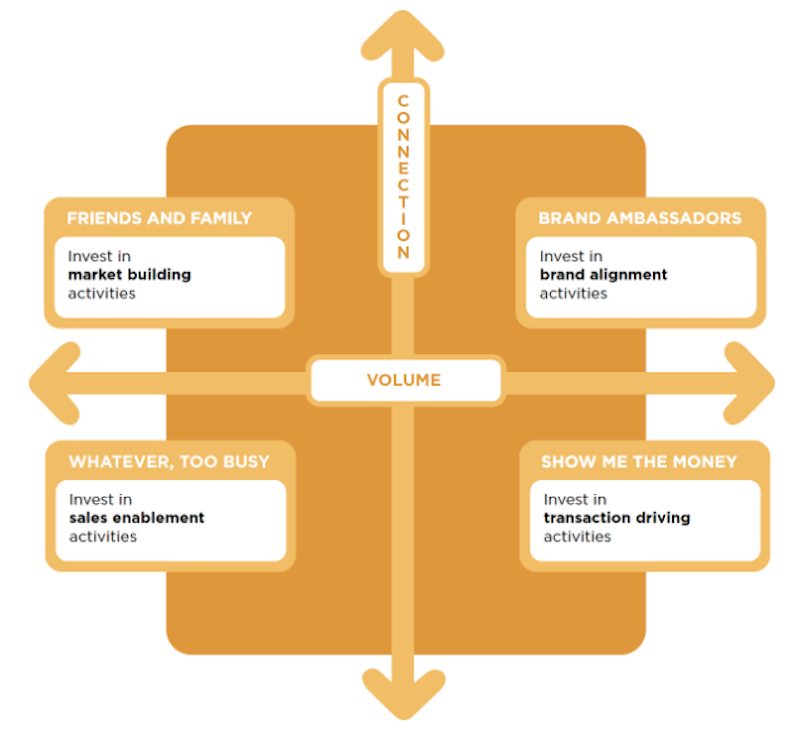The team at Brandmovers recently released an eBook called “The Business Case for Smarter Incentives.” This free, downloadable resource contains essential context about the current state of B2B motivation and reward-based programs and builds the rationale for why things need to change.
Fundamentally, stagnant programs risk more than just ROI; they erode the equity and trust in a brand that B2B buyers rely on for stability and reputation. If we lose the hard-gained ground in building B2B loyalty, our revenue retention and market share will suffer. And those metrics impact the business’ overall value, not just ROI.
Beyond this strong business rationale, the eBook covers several reasons businesses choose not to change their programs. And while these reasons seem like common sense (“If it ain’t broke …”), several examples in the eBook explore the upside of doing the hard work to improve programs over time. The last section of this new resource from Brandmovers is a checklist that any program owner or manager can use to explore potential program improvements.
Throughout the eBook, common themes emerge around personalization and emotional connection. B2B brands need to segment their audience based on attributes beyond revenue. Companies should measure each customer’s (or seller’s) level of emotional connection to the brand with the same rigor that they measure purchasing or sales results. This new metric, paired with revenue, forms an entirely new dimension in the segmentation toolkit.
Measuring Brand Affinity
A recent study by Gartner and Motista found that brand affinity (emotional connection) is far more prevalent in B2B purchasing than B2C – or in simpler terms, buyers in a business feel stronger ties to their preferred vendors than most consumers feel toward Starbucks or Nike. This is because forming a B2B relationship is about more than just the experience; it impacts a decision-maker’s professional reputation and the risks to the business for making the wrong choice based on price alone.
Brandmovers is pioneering a new diagnostic tool for measuring brand affinity called the PAVE Engagement Model. PAVE is an acronym for Passion, Authenticity, Value and Enablement. This survey-based measurement model helps segment program audiences by the level of their connection with the brand. The model establishes a baseline brand affinity score for the program audience, identifies critical areas of opportunity to address, and aids in the personalization of program features.
Companies are familiar with the Pareto principle, where most of their revenue comes from a small percentage of top-performing reps or customers and with a performance bell curve showing a sizable “middle-performer” segment. The PAVE Engagement Model adds a third dimension to segmentation based on brand connection or affinity. The result is a segmentation structure that helps brands identify where their engagement tactics, communications and program rules might vary based on the unique insights that PAVE provides.

The illustration from the eBook, shown above, demonstrates the new dimension of connection on the vertical axis and the traditional dimension of volume (or revenue) on the horizontal. It suggests that B2B relationships in the top right quadrant, “Brand Ambassadors,” are ideal and mutually beneficial because of their high volume and strong connection to the brand. By contrast, the “show-me-the-money” crowd also delivers high volume and is particularly driven by incentives and rewards. “Friends and Family” (think smaller franchisees or dealers) are devoted to your brand and thus have a stronger emotional connection. However, their revenues aren’t at the front end of the bell curve for various reasons; therefore, incentives and rewards alone are insufficient to grow the relationship. And the “Whatever, Too Busy” crowd? Well, that seems self-explanatory on both dimensions.
Even if you maintain a standard rules structure for the core umbrella program, companies should be looking to supplement with targeted and personalized promotions, communications and opportunities that appeal directly to the segment in which customers or reps fall today. Similarly, the behaviors that should be rewarded could vary by the PAVE-assisted segment in which the audience members reside. This approach is the essence of making your program smarter – a.k.a. more sustainable, impactful and resistant to competitive threats.
Free Webinar
Chris Galloway, Brandmovers’ Executive Vice President of Strategy and Design, will deliver a webinar on Wednesday, Jan. 25, at 2 p.m. Eastern, covering the highlights of the eBook, including his own work in developing the PAVE Engagement Model. The webinar is free; You can register here to attend or view the recorded webinar.




